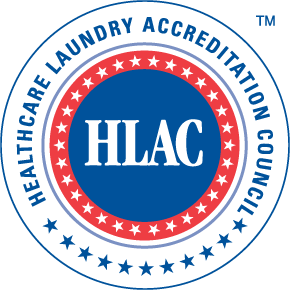Healthcare Industry FAQ’s
Infection Prevention
How does infection control impact healthcare laundries?
Infection control is vital because healthcare textiles often contact patients’ skin. Proper processes reduce the risk of spreading infections. Read More
How can healthcare laundries reduce transmission of COVID-19?
HLAC advises that established cleaning and disinfection practices, aligned with CDC recommendations, are critical in reducing environmental transmission of the coronavirus. Read more
What precautions should laundries take during disease outbreaks like Monkeypox?
In case of outbreaks, healthcare laundries should follow specific protocols, such as increased disinfection and handling guidelines to prevent cross-contamination. Read More
How should healthcare laundries handle Monkeypox-contaminated linen?
The U.S. Centers for Disease Control and Prevention (CDC) issued guidance for handling and laundering linens contaminated with the Monkeypox virus in June 2022. Read more
How do reusable microfiber cleaning products support infection prevention in healthcare settings?
Reusable microfiber cleaning products align with environmental cleaning and disinfecting goals in hospitals, nursing homes, and other healthcare settings. Read more
How do laundries ensure textiles are hygienically clean?
Laundries use strict processes for washing, drying, and handling textiles to maintain hygiene standards and minimize infection risks. Read More
Laundry Management & Operations
What is the role of air flow in healthcare laundries?
Proper air flow ensures safety, reduces contamination, and improves efficiency by controlling dust and other airborne particles. Read More
How does pharmaceutical waste impact healthcare laundry operations?
Proper management of pharmaceutical waste is essential to prevent contamination and maintain a safe working environment. Read More
Industry Compliance & Best Practices
Why is it important to measure laundry quality?
Quality measurements in healthcare laundry help ensure safety and indicate a facility’s commitment to overall healthcare quality. Read More
What are the benefits of reusable textiles compared to disposable ones?
Reusable textiles offer clear environmental advantages, superior performance, and more predictable availability. Read More
How has the importance of accreditation changed over time?
Events like the Ebola crisis have underscored the need for accreditation, emphasizing rigorous safety and compliance standards. Read More


